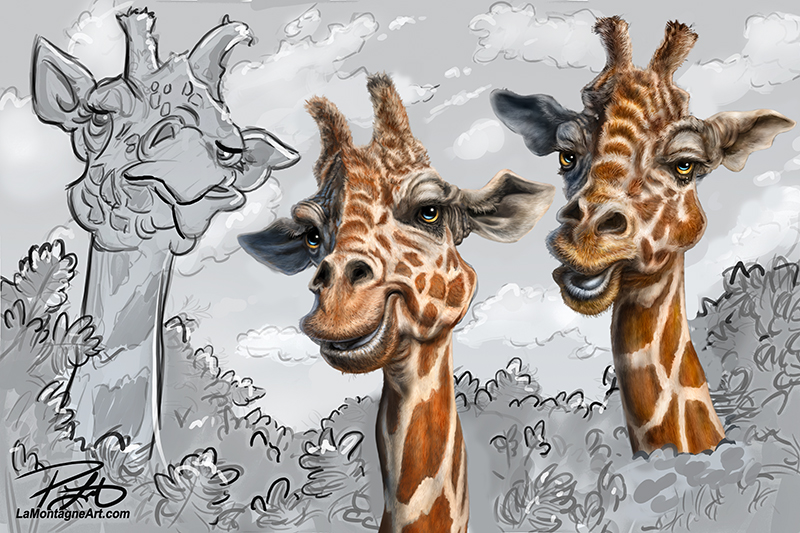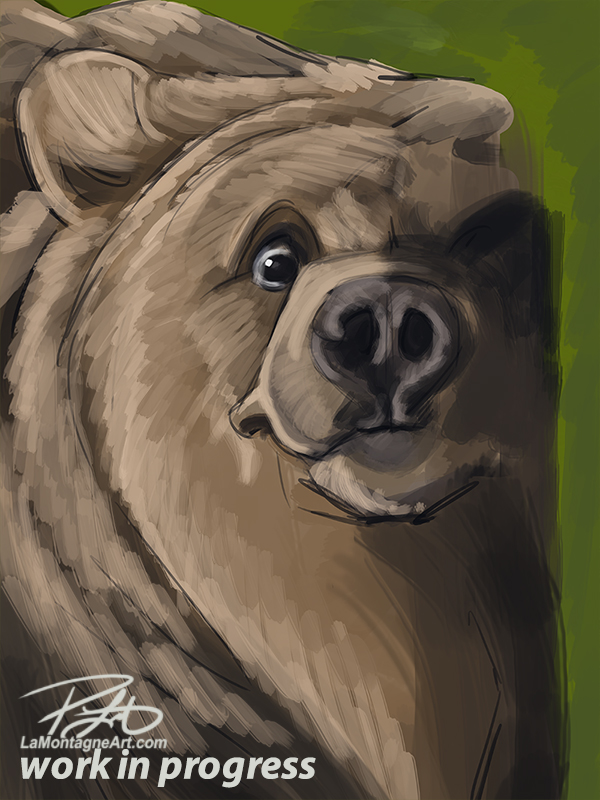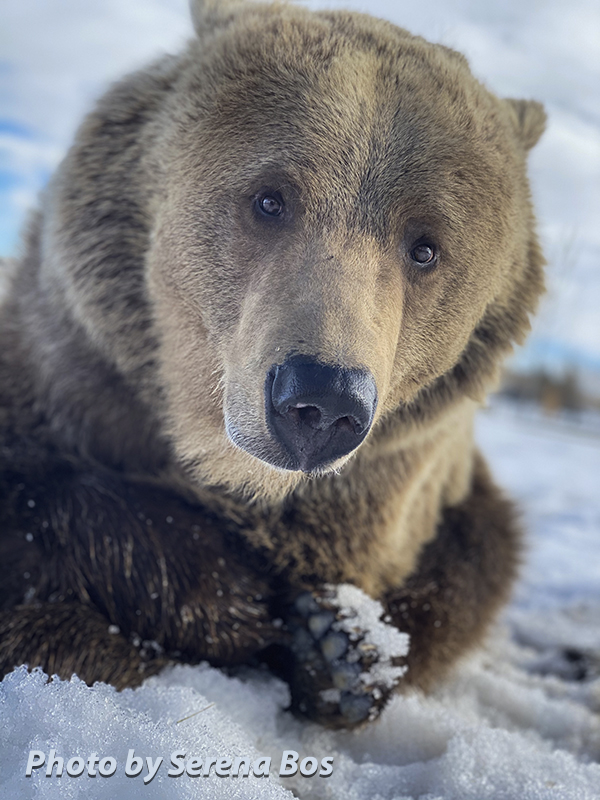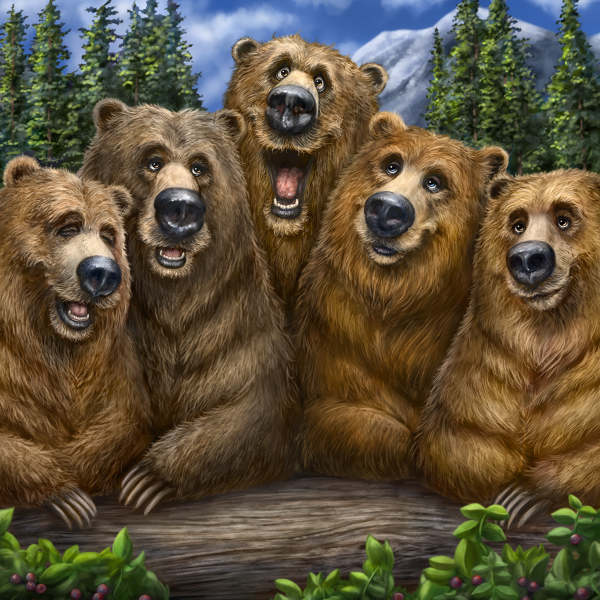
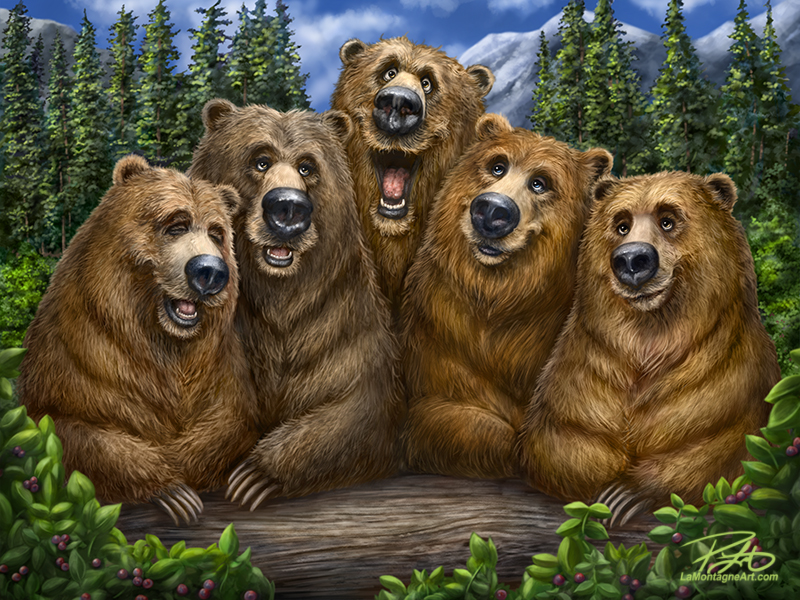 “How long does it take you to paint one of these?”
“How long does it take you to paint one of these?”
It’s one of the most common questions I get.
Do I include all the time and travel? Taking, sorting and editing reference photos? How about sketches and roughs? What about the paintings where I took the reference a few years ago but wasn’t inspired by them until much later?
I’ve never completed a painting in one sitting. It’s usually one or two hours at a time. When I’m not painting, I draw editorial cartoons, do my bookkeeping, admin work, format and order products, email clients, and try to have a life, none of which is on a schedule. Sometimes, I start a painting and don’t return to it for a week. Right now, I have at least five paintings in different stages of completion.
So, technically, I have no idea how long it really takes to complete each painting.
But rather than bore a market booth customer with a complicated, existential answer to a simple question, I usually ballpark it and say, “Somewhere around 15 or 20 hours.”
I don’t know if that’s more or less than what they expected.
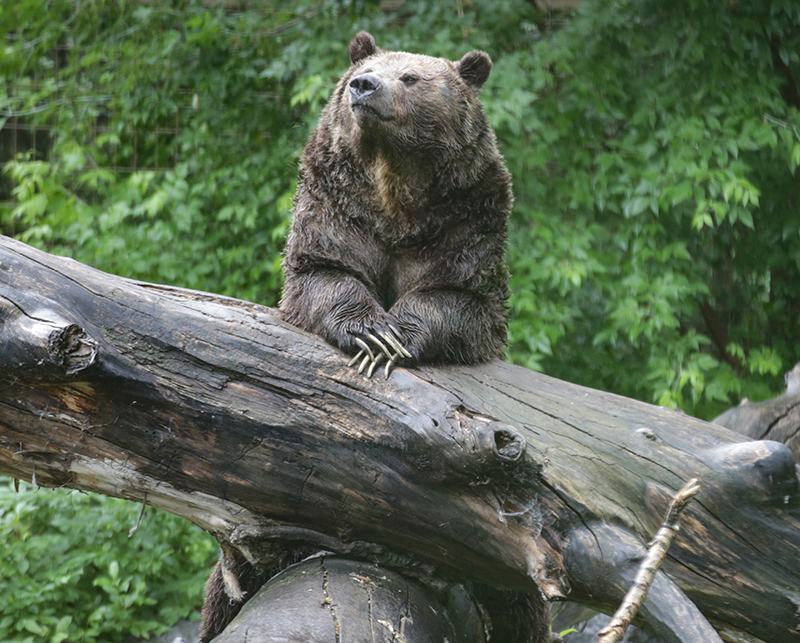 The spark for this painting was reference photos I took at the Calgary Zoo in June of 2023. I enjoyed watching long-time grizzly resident Skoki straddle a log while resting his arms on another log across it. It reminded me of somebody bellying up to a bar to order a drink.
The spark for this painting was reference photos I took at the Calgary Zoo in June of 2023. I enjoyed watching long-time grizzly resident Skoki straddle a log while resting his arms on another log across it. It reminded me of somebody bellying up to a bar to order a drink.
He sat there for a good long while and I took dozens of photos of him turning this way and that. The painting that first came to mind was four or five grizzlies sitting at the log, like buddies at the bar. I even figured I might call it Grizzly Bar.
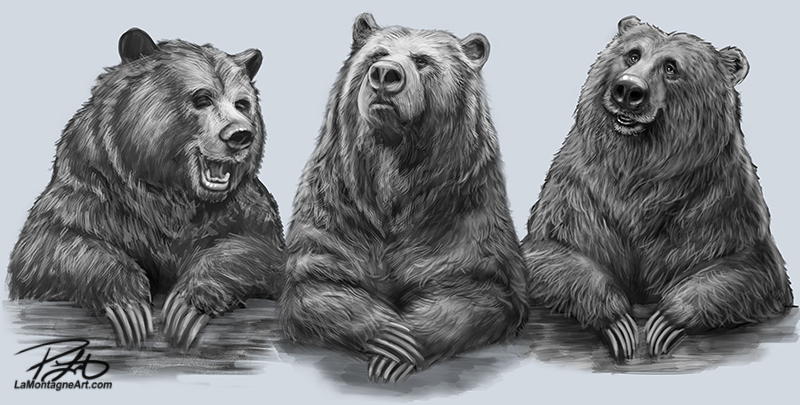 I did some drawings shortly after that and returned to them whenever I had the time. While Skoki was the inspiration, I used several bears in my photo archive as reference for the bodies and faces. If nothing else, I figured they would be good sketches for the book I’ve been talking about for years, but to my eternal shame, never deliver.
I did some drawings shortly after that and returned to them whenever I had the time. While Skoki was the inspiration, I used several bears in my photo archive as reference for the bodies and faces. If nothing else, I figured they would be good sketches for the book I’ve been talking about for years, but to my eternal shame, never deliver.
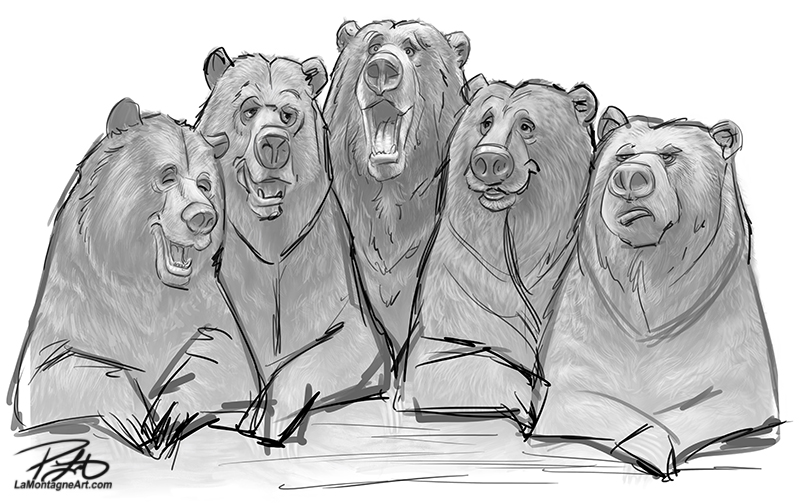 Once I had several sketches, I pieced them together, trying to find a composition I liked. The five grizzly bear buddies soon became five members of a family. It reminded me of a grizzly bear version of a Sears family portrait photo shoot. Refining the shapes so they fit together, and reimagining the expressions meant losing a lot of the sketch detail I had already drawn, but that’s just part of the process.
Once I had several sketches, I pieced them together, trying to find a composition I liked. The five grizzly bear buddies soon became five members of a family. It reminded me of a grizzly bear version of a Sears family portrait photo shoot. Refining the shapes so they fit together, and reimagining the expressions meant losing a lot of the sketch detail I had already drawn, but that’s just part of the process.
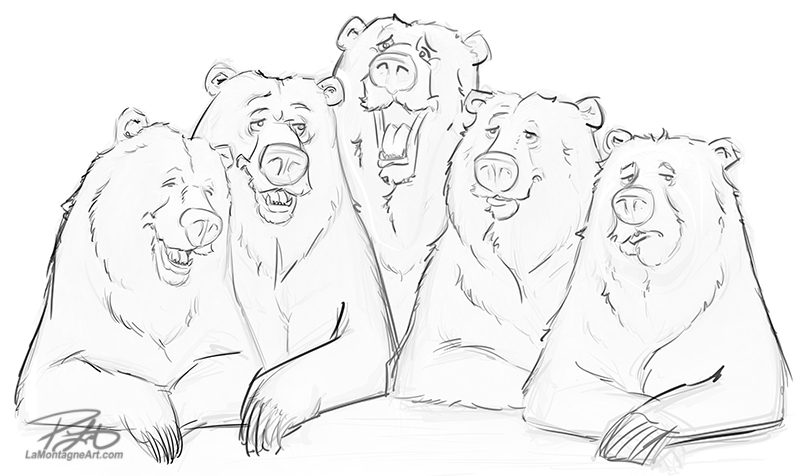 Many paintings begin as one idea but take on their own life while I work. I have no idea how many hours I’ve put into this piece, but it’s more than any painting before.
Many paintings begin as one idea but take on their own life while I work. I have no idea how many hours I’ve put into this piece, but it’s more than any painting before.
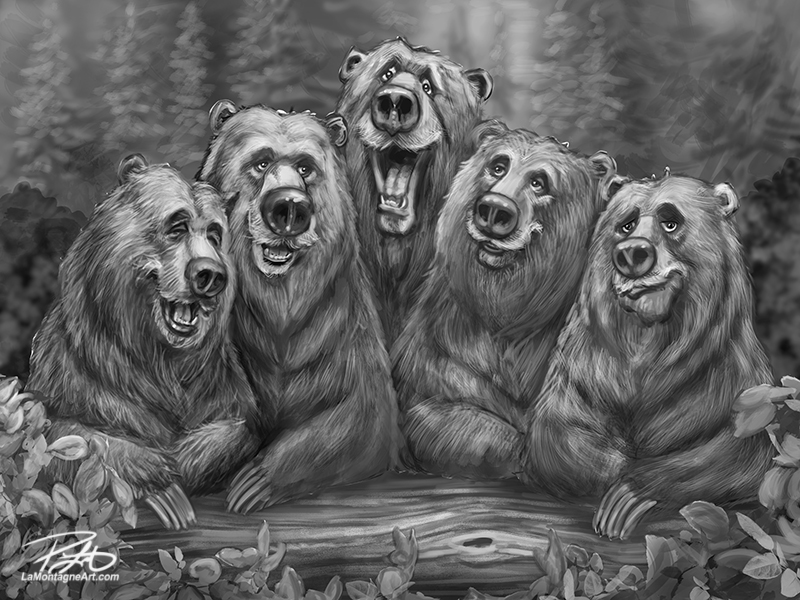 Rather than work in colour from the start, as with other paintings, I started this one in greyscale because I wanted to play with the values and experiment with the scene. Once I had a good starting point, I painted colour in the background and foreground, leaving the grizzlies for last.
Rather than work in colour from the start, as with other paintings, I started this one in greyscale because I wanted to play with the values and experiment with the scene. Once I had a good starting point, I painted colour in the background and foreground, leaving the grizzlies for last.
I’ll confess I don’t much like painting landscapes or scenery, so I wanted to get that out of the way to get to the part I love most — the bears, of course.
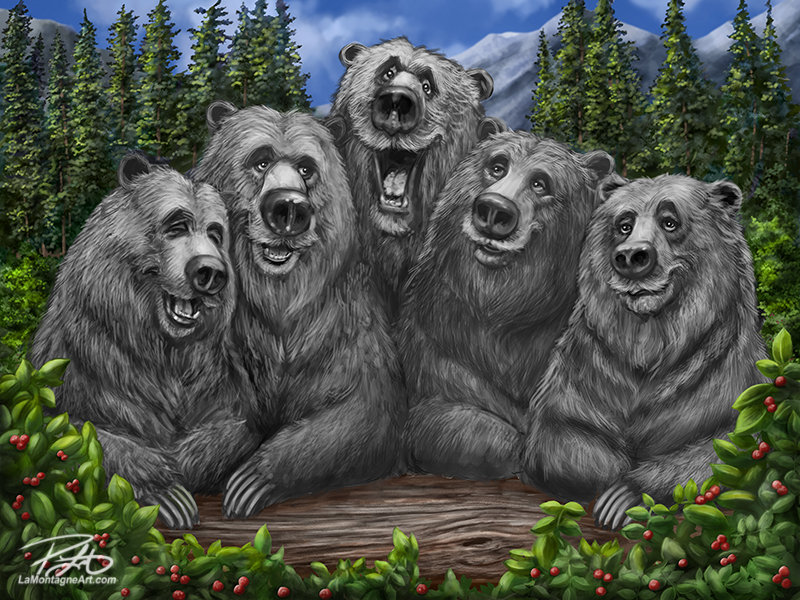 Initially, the berries in the foreground were bright red. But when I showed this work-in-progress image to my buddy, Derek, at Electric Grizzly Tattoo, he suggested they might be a distraction from the bears. It was a helpful critique. So, I toned down the berries and made them a deeper burgundy and blue.
Initially, the berries in the foreground were bright red. But when I showed this work-in-progress image to my buddy, Derek, at Electric Grizzly Tattoo, he suggested they might be a distraction from the bears. It was a helpful critique. So, I toned down the berries and made them a deeper burgundy and blue.
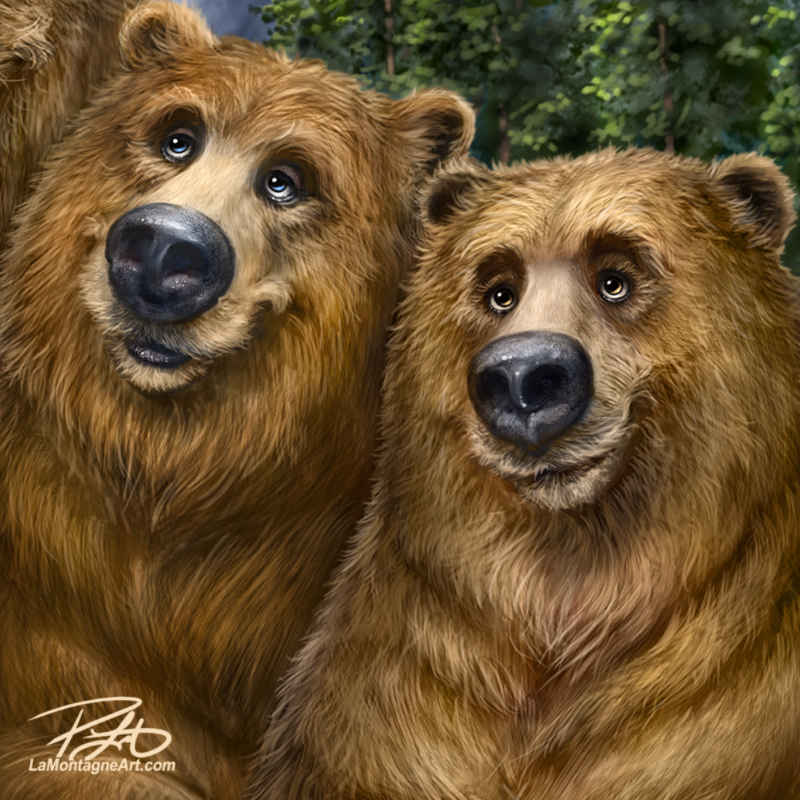 As brown bears come in many shades, from dark brown to red to blonde, I had initially planned to have a more noticeable colour difference between the five. But it looked weird, and I didn’t like it, so I erred on the side of more subtle variations in fur colour.
As brown bears come in many shades, from dark brown to red to blonde, I had initially planned to have a more noticeable colour difference between the five. But it looked weird, and I didn’t like it, so I erred on the side of more subtle variations in fur colour.
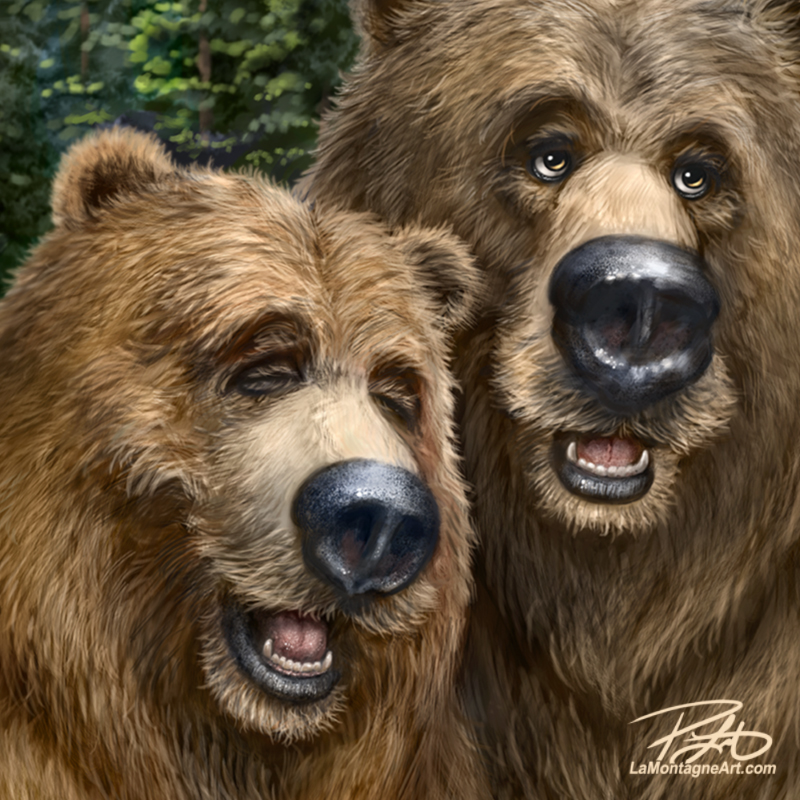 One of the nice things about working digitally is that at the end of each painting session, I can look back at the image when I opened the file and compare it to progress at the end of a session. It’s often a big difference, and that’s satisfying. However, when a painting nears completion, two hours of work may be barely noticeable before and after. That’s usually how I know it’s time to call it done.
One of the nice things about working digitally is that at the end of each painting session, I can look back at the image when I opened the file and compare it to progress at the end of a session. It’s often a big difference, and that’s satisfying. However, when a painting nears completion, two hours of work may be barely noticeable before and after. That’s usually how I know it’s time to call it done.
For you digital painters, this was a very big file with a lot of detail. The finished dimensions are 30″X40″ at 300ppi. Near the end of this piece, with seven layers, the working file size was over 1.5GB. Thankfully my computer can handle it, but I still closed and reopened the program every half hour or so to prevent any lag. With a file this big, a crash can happen and losing an hour of work is a real risk.
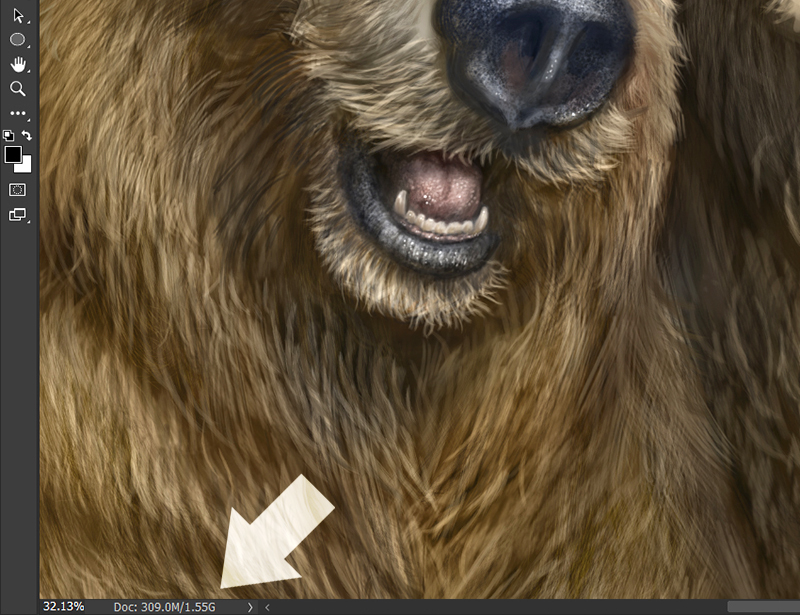 Deciding whether I like a piece or not takes time, but I’m pretty happy with how this turned out. I liked my Meerkat piece when I finished it, but it took four weeks of it hanging on the grid wall beside me at The Banff Christmas Market before I realized it’s one of my personal favourites.
Deciding whether I like a piece or not takes time, but I’m pretty happy with how this turned out. I liked my Meerkat piece when I finished it, but it took four weeks of it hanging on the grid wall beside me at The Banff Christmas Market before I realized it’s one of my personal favourites.
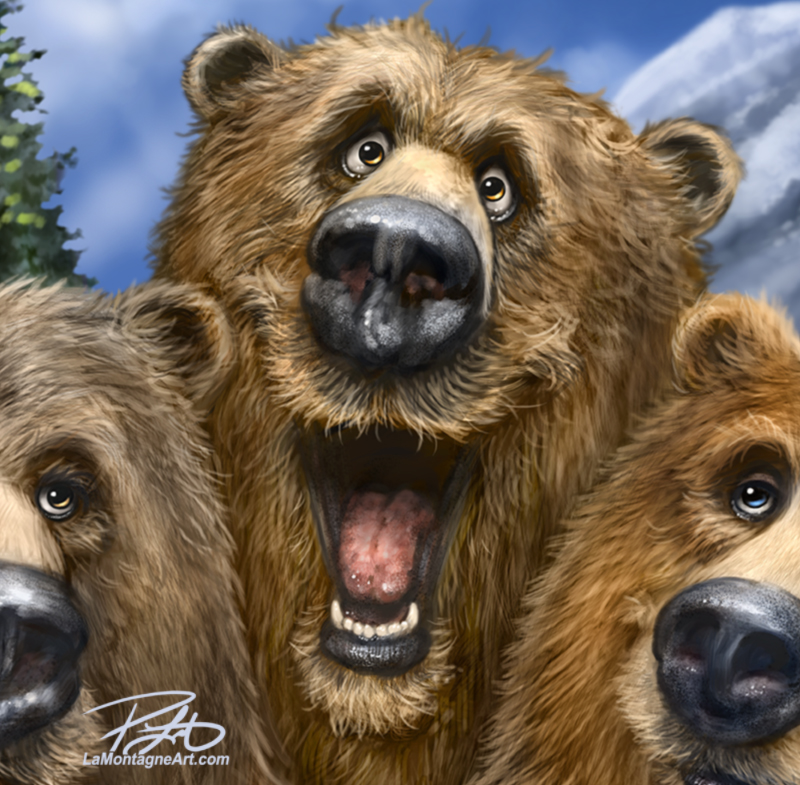 Because of the current uncertain economy, I’m not yet committing to doing puzzles again right away. But when I do, I think this grizzly family is worthy of consideration.
Because of the current uncertain economy, I’m not yet committing to doing puzzles again right away. But when I do, I think this grizzly family is worthy of consideration.
What do you think? Let me know in the comments.

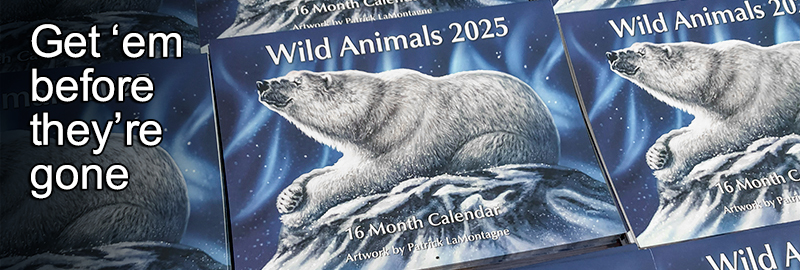
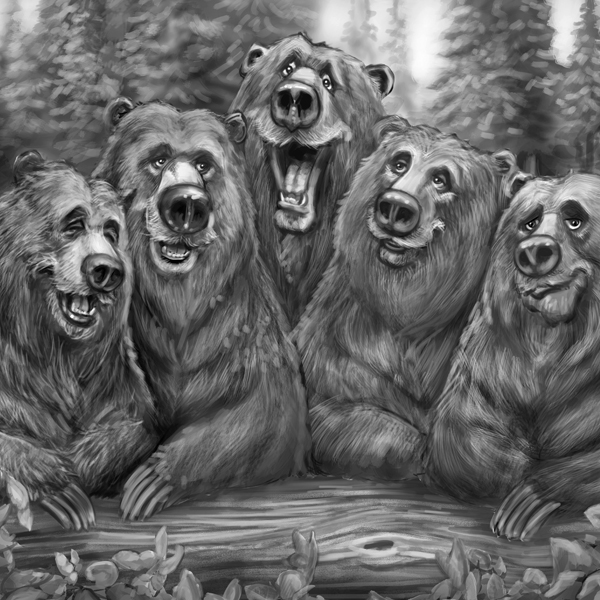
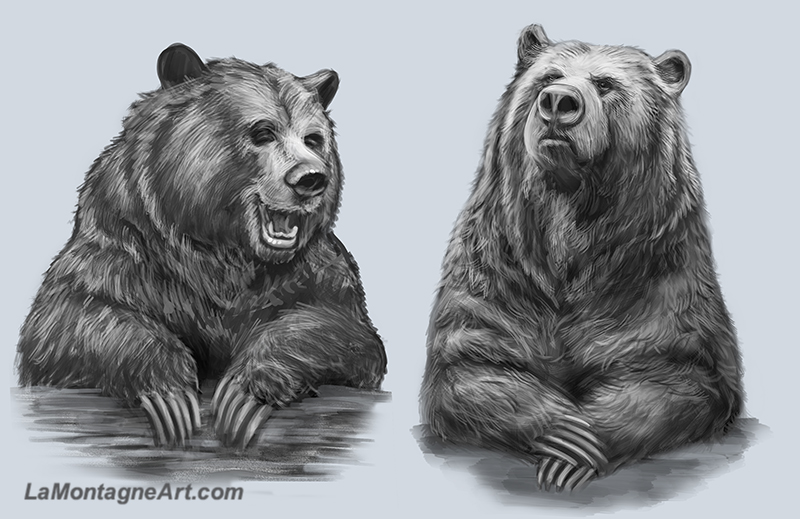 But I’ve also been working on the group of bears I’ve been chipping away at for some time now. The original plan for this piece was five adult bears sitting at a log in the woods, like a group of friends hanging out and chatting. I drew six of them separately to give myself options.
But I’ve also been working on the group of bears I’ve been chipping away at for some time now. The original plan for this piece was five adult bears sitting at a log in the woods, like a group of friends hanging out and chatting. I drew six of them separately to give myself options.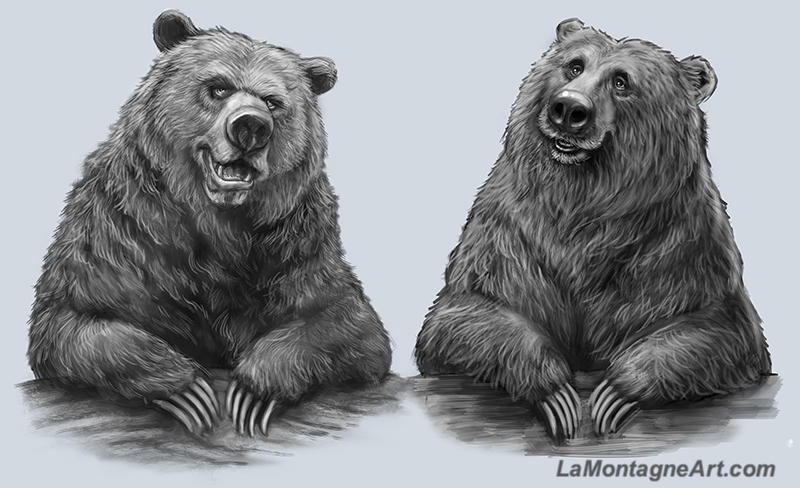 However, when I dropped and dragged them together into one image, the digital canvas was very long. A long horizontal canvas has appeal for a canvas or metal print. However, from a commercial perspective, it would limit what I could offer for licensing and paper prints.
However, when I dropped and dragged them together into one image, the digital canvas was very long. A long horizontal canvas has appeal for a canvas or metal print. However, from a commercial perspective, it would limit what I could offer for licensing and paper prints.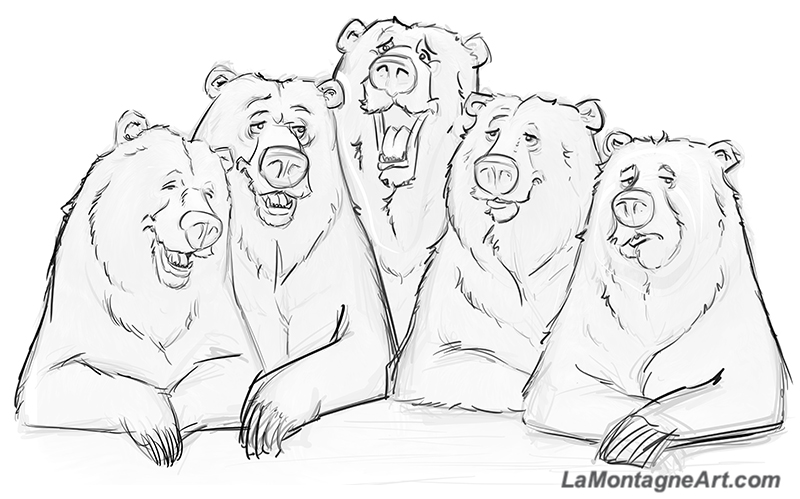 Once I was pleased with the group layout, I dropped the layer’s opacity and traced over the shapes and basic features. I did this several times, refining with each pass.
Once I was pleased with the group layout, I dropped the layer’s opacity and traced over the shapes and basic features. I did this several times, refining with each pass.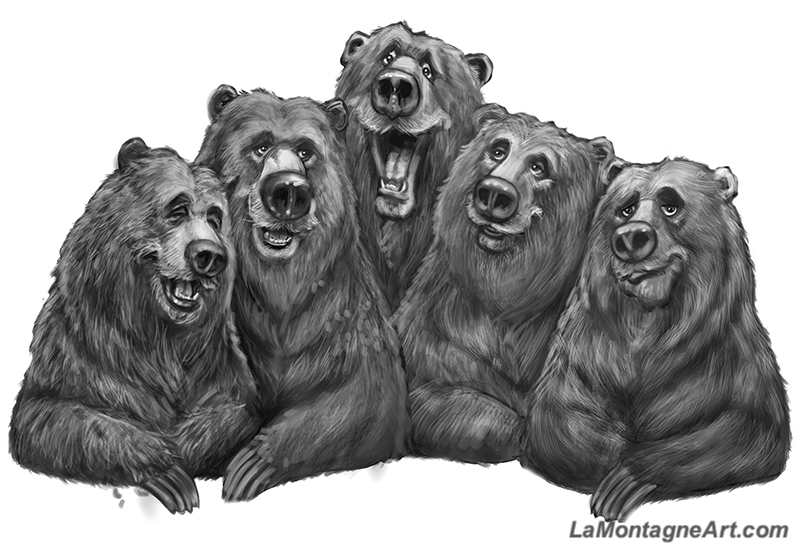 Then, I got to work on the shading, detail, expressions, and character. I do that right up until the end of every painting, as personality is the most essential part and is where I have the most fun. And with this painting, I’ve got five faces to discover instead of one.
Then, I got to work on the shading, detail, expressions, and character. I do that right up until the end of every painting, as personality is the most essential part and is where I have the most fun. And with this painting, I’ve got five faces to discover instead of one.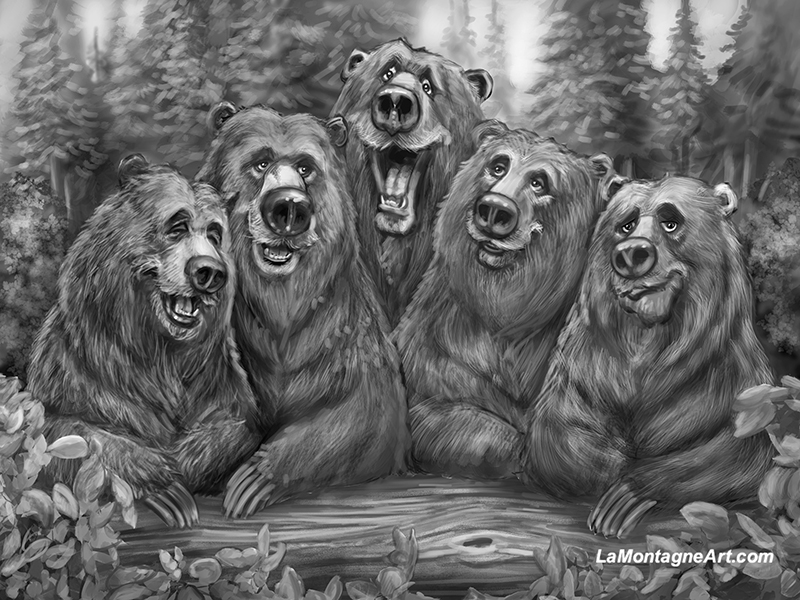 This piece seems like a family posing for a Sears portrait or the opening of a sitcom like Family Ties or Growing Pains. I’m going to call it ‘The Grizzlies.’
This piece seems like a family posing for a Sears portrait or the opening of a sitcom like Family Ties or Growing Pains. I’m going to call it ‘The Grizzlies.’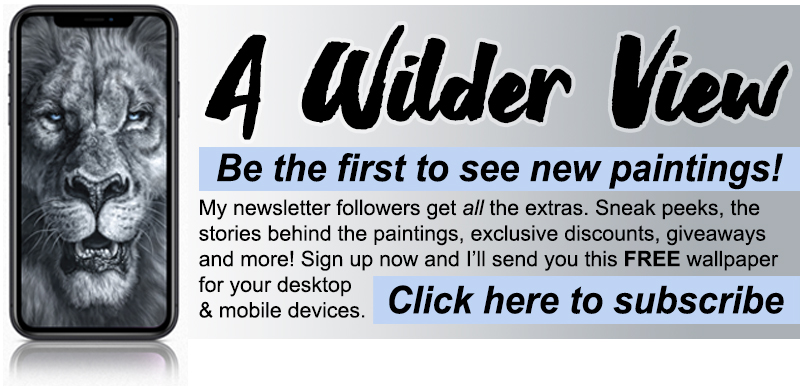

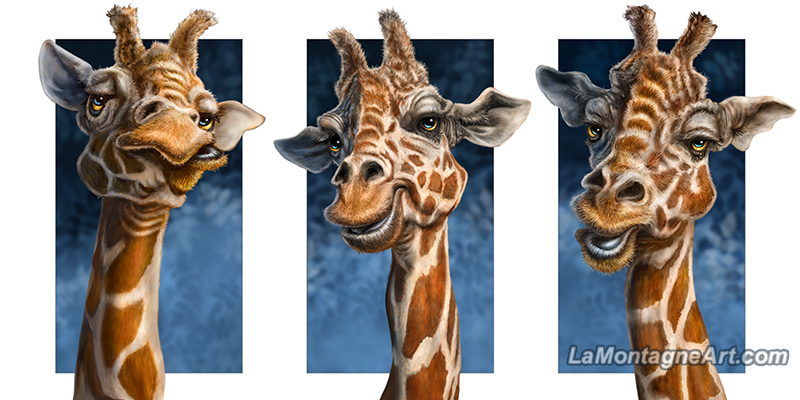
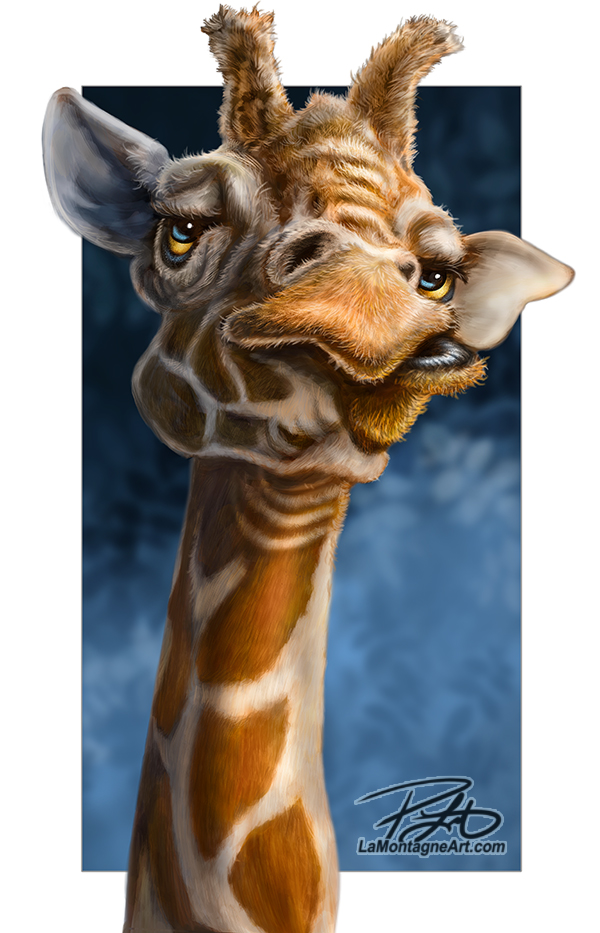
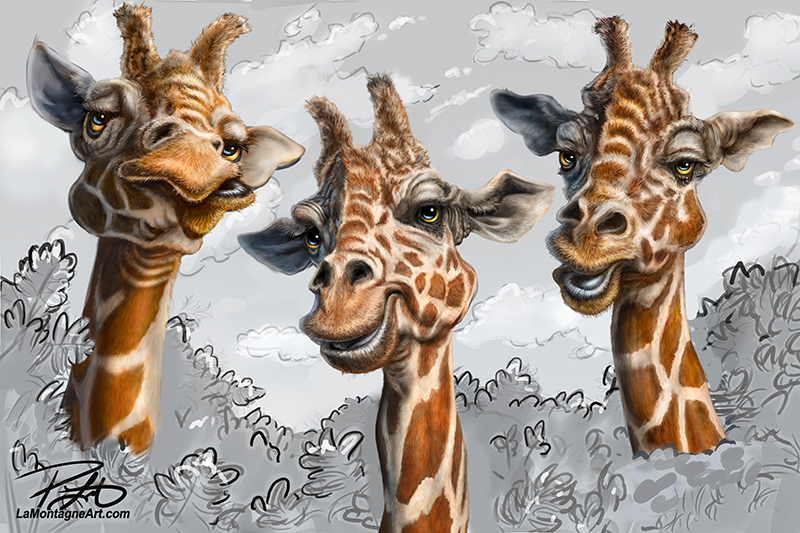 I have a few ideas on how best to do it, including creating a new brush for the task, but with no deadline, I have time to experiment.
I have a few ideas on how best to do it, including creating a new brush for the task, but with no deadline, I have time to experiment.
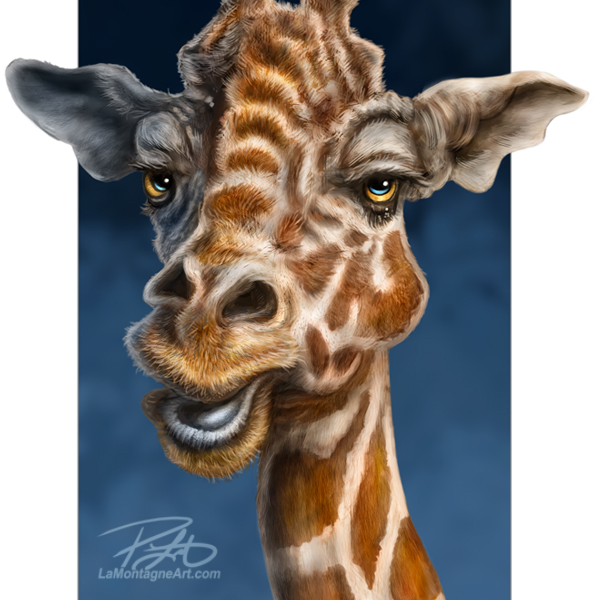
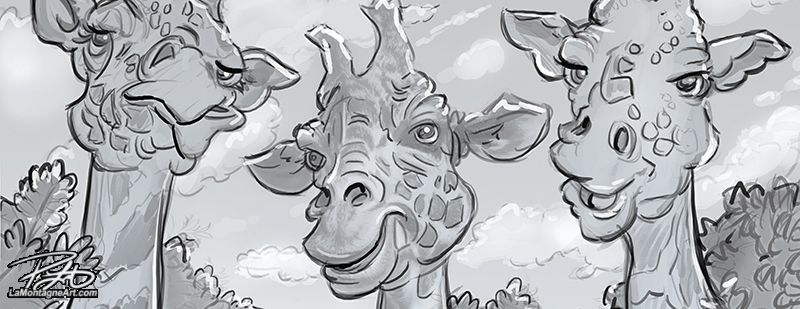
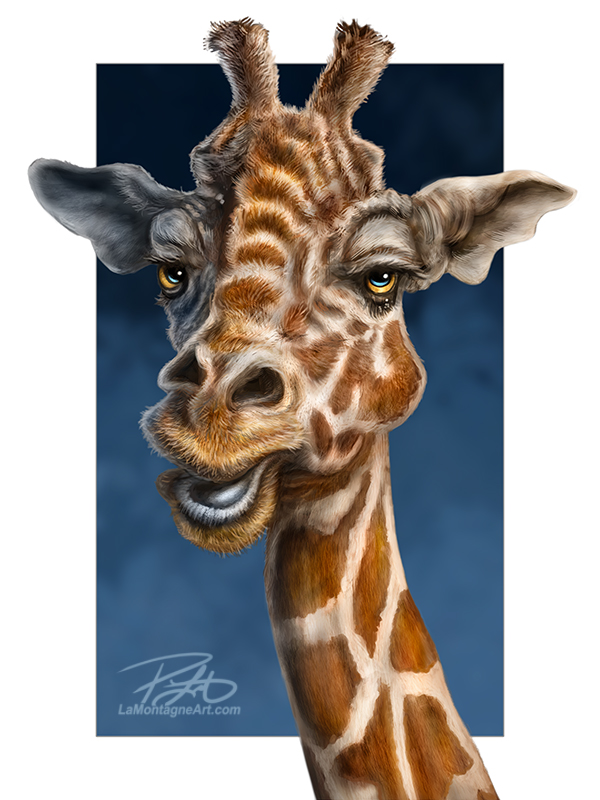 The challenge with this piece is to make each character different from the others but with the same level of detail and colour palette.
The challenge with this piece is to make each character different from the others but with the same level of detail and colour palette.